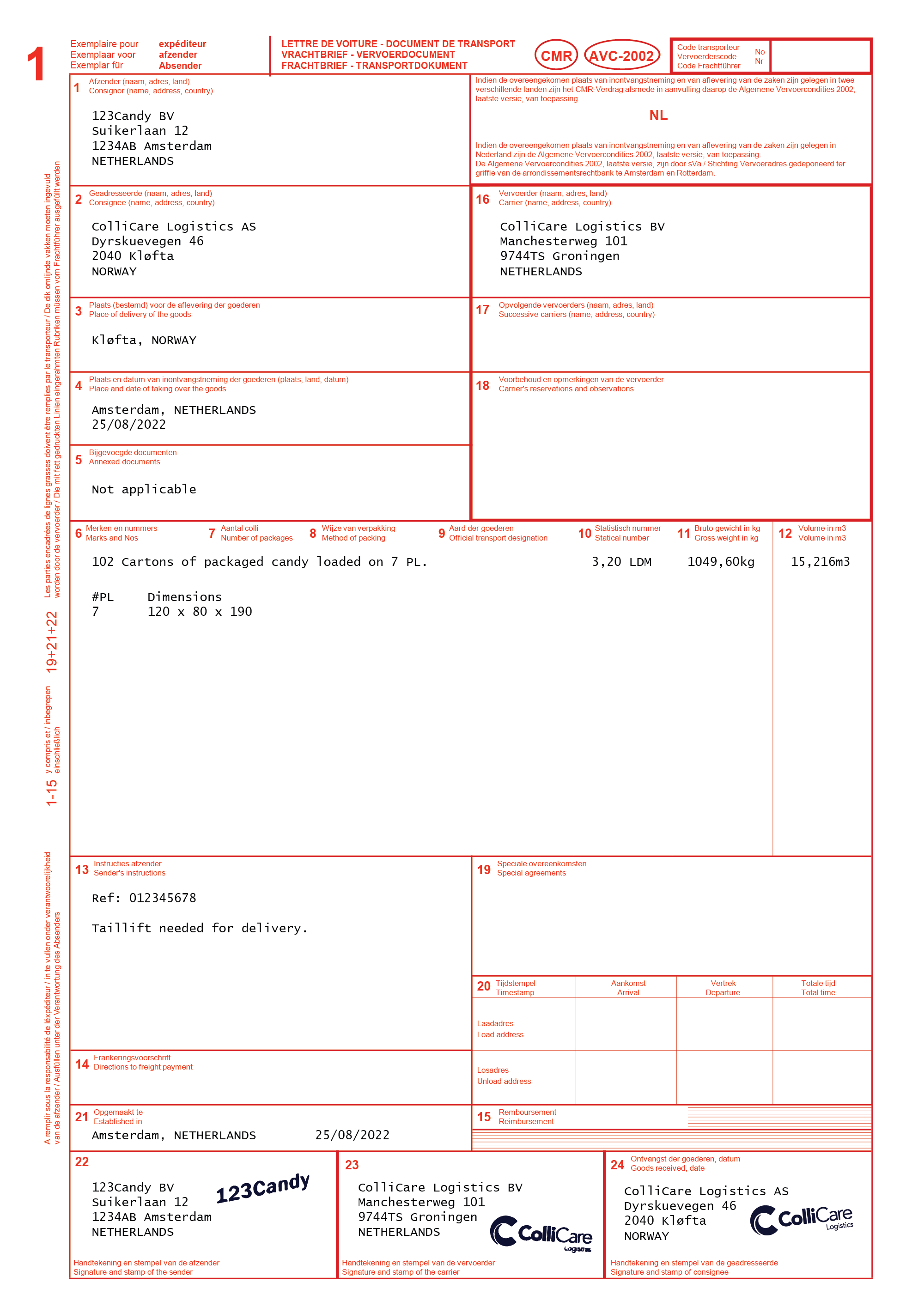The CMR waybill
The CMR Convention (Convention on the Contract for the International Carriage of Goods by Road) of 1956 covers various legal issues concerning international road freight. Based on this convention, a standardized CMR waybill has been developed and has been used for road shipments since 1958. The document is internationally recognized, including in all European countries as well as some Asian and North African countries. In all participating countries, the document is mandatory and legally binding for road freight shipments.
The CMR waybill is normally prepared in triplicate or quadruplicate, and includes a copy for the following stakeholders:
- for the sender, printed in red and marked with a 1;
- for the receiver, printed in blue and marked with a 2;
- for the carrier, printed in green and marked with a 3;
- for the second carrier (if present), printed in black and marked with a 4;

The document usually consists out of 24 fields, and is drafted in multiple languages, often including English. The various fields on the document cover important information related to the shipment such as the sender's details, receiver's details and carrier's details, but also information about the shipped goods like what it is, what are the dimensions of the goods and how much it weights.
In most cases, the sender or carrier drafts the CMR waybill when they receive an order. During the transportation of goods via road, the CMR waybill should be in the vehicle in case of an inspection by the police or customs authorities.
You can find an example of an CMR waybill below:
